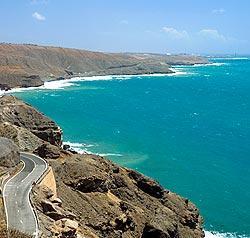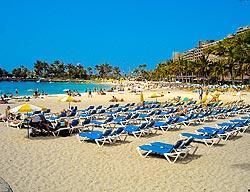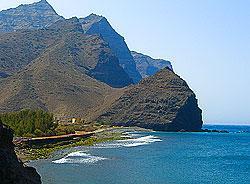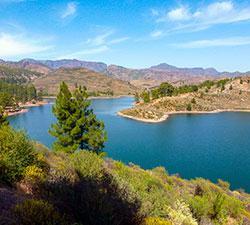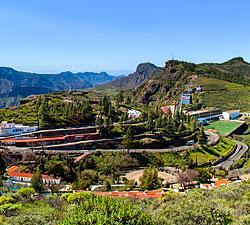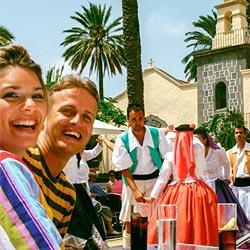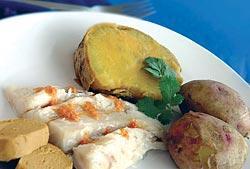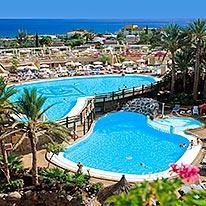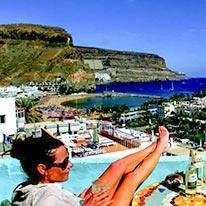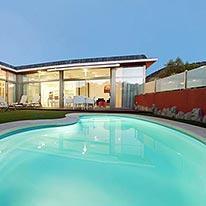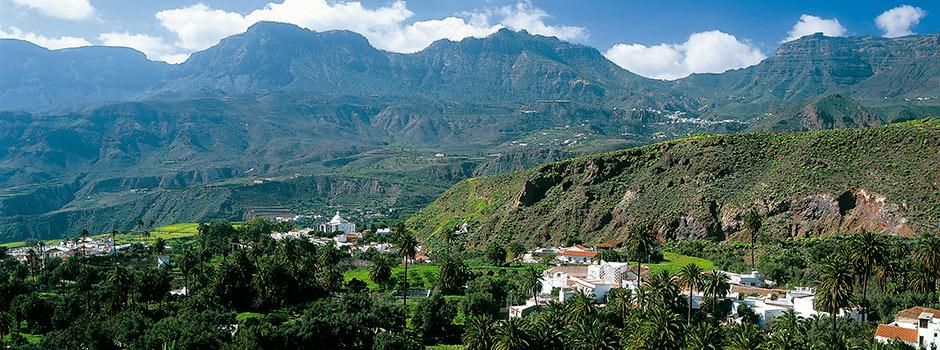The picturesque little village of Santa Lucía will charm you with its whitewashed houses and abundance of palm trees. It’s located on the upper levels of the fertile palm valley of Santa Lucía de Tirajana.
Throughout the 19th century the population of this village was very small and widely spread, so that within the confines of this municipality you also find the village of Sardina and the coastal towns of Doctoral and Vecindario. After tomato growing was introduced in the coastal areas of this municipality and also with the impact of the tourism boom in the 60s, the population grew rapidly. Many people working in the southern tourist resorts preferred to settle in this region, as property prices were less expensive.
Perched on the top of the hill stands the Iglesia de Santa Lucía, which was built in 1898 on the site of a former 17th century chapel. The imposing dome of the church looks more like a mosque when you look at it from afar.
The village of Santa Lucía also boasts a small, but notable, museum, the Museo del Castillo de la Fortaleza, displaying archaeological finds from the surroundings such as Guanche artefacts, agricultural tools, leather goods and skeletons.
Nearby, you’ll discover the Fortaleza Grande, a rock formation mysteriously shaped like a fortress, which was where the Guanches made one of their last stands. Legend has it that in 1483, many Guanches refused to convert to Christianity and instead threw themselves off these rocks to their deaths. In commemoration of this historical event, every year on the 29th of April a ceremony takes place on the plateau behind it.
Along the coast, the first beach you come to is Pozo Izquierdo, one of the main World Windsurfing Championship venues. Pozo Izquierdo is also home to the Centro de Interpretación Marítima (Maritime Interpretation Centre).



